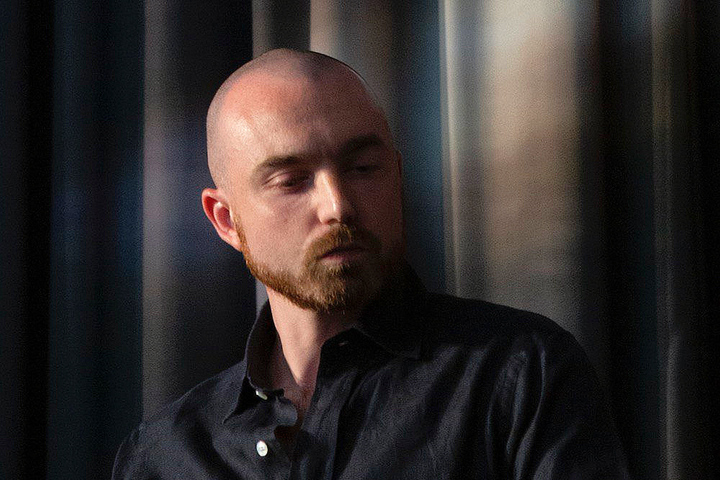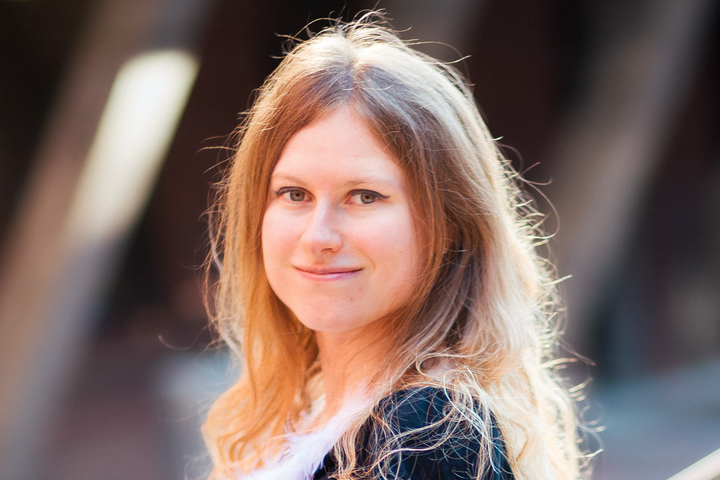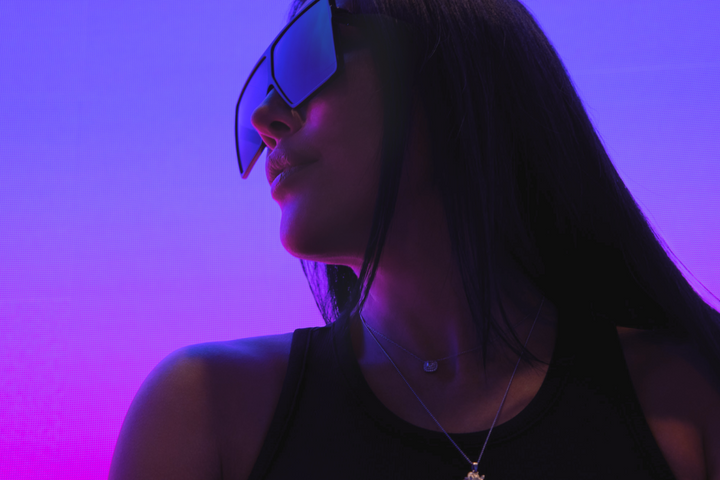Mat Collishaw on New Technologies Impacting the Art world

Mat Collishaw is one of the most significant and compelling artists in contemporary British art. With an early foundation at Goldsmiths College, Collishaw formed part of the legendary movement of Young British Artists. He was one of 16 young artists who participated in the seminal Freeze exhibition organised by Damien Hirst in 1988 as well as the provocative Sensation show of 1997. Throughout his 30-year career, Collishaw has contemplated the nature of the human subconscious and explored ways to influence it through various media. Through optical illusions, paintings, projections and moving sculptures, the artist creates works and scenarios that directly and unconsciously engage their viewers. The works encourage us to think about fundamental questions of psychology, history, sociology and science. Behind the richness and visual appeal of each work there is a deep exploration of how we perceive and are influenced by the world today through images, and modern technology. Questions regarding behavioural manipulation, programming, temporal reality all linger in the viewing experience.
Snejana Krasteva: Through my readings of your interviews and observations of your past projects, I have noticed your emphasis on the suitability of blockchain as a medium for certain projects that would otherwise be unattainable through other mediums. As someone that comes from more traditional contemporary art, how do you think these two worlds cohabit?
Mat Collishaw: The honest answer is, I don't know. Everything is evolving. The pandemic was obviously very important in terms of making artists, museum curators, directors, and gallerists aware of putting their content online because museums, exhibitions, and galleries were closed for a couple of years. So, everybody started building more elaborate websites and spaces where people could meet and talk. I think before then there was probably a lot more skepticism. I remember back in the early 1990s, I did a show in New York and there was a guy there who was using online America. He was going around all the galleries in Manhattan, trying to persuade them that the Internet was a crucial networking tool. Nobody was interested and everyone thought that it was never going to happen. The 1990s were not that long ago and now of course it's a fundamental tool for everything that we do. So I assume with Web3 it is going to be similar.
It's going to take a little bit of time before it gets traction. People are going to be skeptical about it because the art world, strangely, is quite conservative, although it's a very innovative place. I think this is a period of transition. I think we'll always have physical galleries with physical artworks and experiences in the real world. But I think the new virtual realm is going to become more and more important. And for me, it's this way of creating a whole new interface with an artwork.
If you want to engage with people, it makes sense to be using all these new devices because this is what we're dealing with on a day-to-day basis. A make a lot of work about the dark side of social media or our addiction to these devices. And generally, the way that we are all vulnerable to manipulation and exploitation and how this can have potentially devastating consequences.
So, I think it's very important that I'm engaging with technology because that's the key distribution network for a lot of contemporary ideas. Many of my artworks refer to the Gothic, the Renaissance or the Baroque and the whole trajectory of art history from 1400 up until now. But I also realize that back then a lot of painting was religious iconography and political propaganda. All of this art is among other things a means to manipulate and make us see the world in a different way. The technologies of today are just the latest iteration of this facility to manipulate.
Sonia Stubblebine: How did you get an idea for Heterosis? Could you tell us about the collaboration with Snark.art?
Mat Collishaw: I've worked with flowers for a long time. They were the first things I started working with in the early 1990s when I started experimenting with Photoshop. I've done a lot of other work with flowers over the years and it's not really so much about flowers themselves. They are generally a vehicle for other ideas that I’m trying to work with. But in this case, I was looking into what NFTs and blockchain were doing, trying to understand it and make an artwork that resonated with its particularities. I was curious to work in this new medium because I work with so many different media from photography to oil painting, virtual reality, and optical illusions.
I try to find a medium or a format that fits the idea that I'm trying to execute. I was also aware that a lot of people were making comparisons to Tulip Mania because there was this huge speculative thing happening with NFTs and people were paying crazy prices for them in early 2021. So I started reading a lot of books on Tulip Mania, and there are very striking parallels and some significant differences between what was happening in 17th-century Holland and what's happening now with NFTs and blockchain.
All of this reading and ideas about how to create something for this new medium led me to think that maybe we could use computer code as a means of simulating genetic code. And this led to the idea of creating flowers, which are hybridable, not dissimilar to the genetic engineering which was happening with tulip cultivation in the 16th & 17th centuries. I thought maybe there is a way of creating virtual species that could evolve. It was around that time that I started to talk to Snark.art. They were just about to launch the OG: Crystal Reef project. So, that was my introduction to a project that was using dynamic evolving NFTs.
One of the significant differences that I learned through my reading on Tulip Mania was how important their networks of communication were. When the price spiked in 1637 and then suddenly crashed, certain people didn't want to pay the money that they'd agreed to pay for transactions in early February when prices were high. As flowers were below ground during this period people didn't have to pay immediately. So understandably, some people reneged on their payments and there were a lot of disputes and lawsuits, and suddenly this crucial network of communication was fractured. This was extremely damaging because the networks fostered social relationships and business arrangements.
With blockchain, there is a guarantee of ownership of an ephemeral asset. Something that is not tangible, like a flower is under the ground or it's locked away in a drawer in darkness for most of the year. A flower only blooms for two weeks of the year; it’s very difficult to determine its status. This time lag between agreements and payments and the nebulous nature of flowers led to this breakdown in trust.
I was a little skeptical about the idea of a collaborative project because I like to have total control since it's an idea that I want to put forward and I like to determine how it is made manifest. All artworks are the result of thousands of decisions and I don't want somebody else making those decisions.
Through reading about tulip mania, I learned about tulip hybridization. Flower cultivators were trying different hybridization processes, cultivating certain species by attempting a variety of planting positions, different manure, and fertilizers to breed the kind of flowers that they wanted. So, there's a form of genetic engineering going on. It wasn't natural selection, it was making a choice about which flower is going to be the most desirable, making these decisions, and crafting the process. I thought this could be a way of working with a community; collectors becoming partners and collaborators in the evolution of Heterosis flower species while I still set the parameters within which these decisions are made.
Sonia Stubblebine: As we started talking about NFT, I was curious about your first impression. What did you think of this technology and what was your first interaction with NFTs?
Mat Collishaw: It took a while for everybody to get their head around what it actually is and how significant it was to have this guarantee of ownership on blockchain and how indisputable it is. I've been working with digital files for years, and as I began to understand this new space, I saw that this could be a real solution to distributing digital art—you don't have to print it or frame it or have it on an LCD screen with a media player. It can just exist out there in the ether.
Sonia Stubblebine: With AI boom, I would like to ask you about your perception of this technology - do you think AI is actually going to change the art world?
Mat Collishaw: It’s very difficult to say. Nobody knows what's going to happen and I don't think anything will ever replace the relationship that a writer, a singer, or an artist can have with their audience, because it comes from their lived experiences, their joy, and their suffering. AI can simulate this but what is essential about any artwork is a person delivering an idea or feeling to another person. So it can't really be replicated, although it can be simulated. But for me, it's very interesting because it's a tool that's out there and it's now prevalent. So I've started to work with it in a way that I think makes sense. Conceptually, one of the projects I've been doing is creating flower pictures. I'm doing a big exhibition at Kew Gardens in London later this year.
Another upcoming exhibition is All Things Fall which will be open from April 20th, 2023 to May 21st, 2023. The exhibit will be held at Bomb Factory Art Foundation’s newest building in Marylebone.
The Bomb Factory Art Foundation show will feature two works that have never been exhibited before, Insilico (2023) and the Palantir (2022) series of 13 paintings. The large-scale zoetrope sculpture, All Things Fall (2014), will be shown in London for the first time.
Snejana Krasteva: What do you think is missing in this whole environment? From my perspective, for example, I've been shocked when I go to NFT conferences and listen to panel discussions, usually when somebody has entered the space and talks about how to be an artist. It usually involves advice to be authentic. So I was wondering, do you feel the same? Do you think the critical analysis is missing? What needs to be done?
Mat Collishaw: Do you mean that what we are lacking at the moment is some kind of framing device, which gives people an understandable introduction to this new world? Is that what you're saying?
Snejana Krasteva: Yes, and we need more analysis. I think we need a bit of critical thinking about what subjects have been explored. Basically, we need to cross-pollinate it with museum curatorial work, because it's been a bit snubbed at the moment.
Mat Collishaw: I did a virtual reality project about seven years ago where I recreated the first major exhibition of photography from 1839 in VR. Generally, I try to use historical ideas, events, or innovations from art history, and then re-frame them using new technology. I’m trying to build a bridge between the past and present. Inevitably new technologies arouse initial hostility; even if you mention virtual reality, certain people want nothing to do with it. But if you're dealing with a historical idea or innovation an audience can engage with it. They're not so immediately aware of the fact that it's being presented through the lens of modern media.
I'm attempting to build a bridge between historical events and techniques and mediums that we’re not necessarily familiar with in an art context. We need more writing and critical thought on everything that's happening in these new, burgeoning areas.
Snejana Krasteva: I think the ancestor of what we see now is actually conceptual art. Do you see it the same way?
Mat Collishaw: I thought this too. The Heterosis flower project is essentially a conceptual art project.
Snejana Krasteva: It's very visual, it's very vivid, it's very figurative. How can it be conceptual? But it's too simplistic to look at it that way. It oversimplifies things.
Mat Collishaw: As you say, with every innovation throughout history, it's been difficult to convince people that creating a new format or a way of doing things is engaging and necessary. But that's the territory you've got to move into if you want to create something new.



